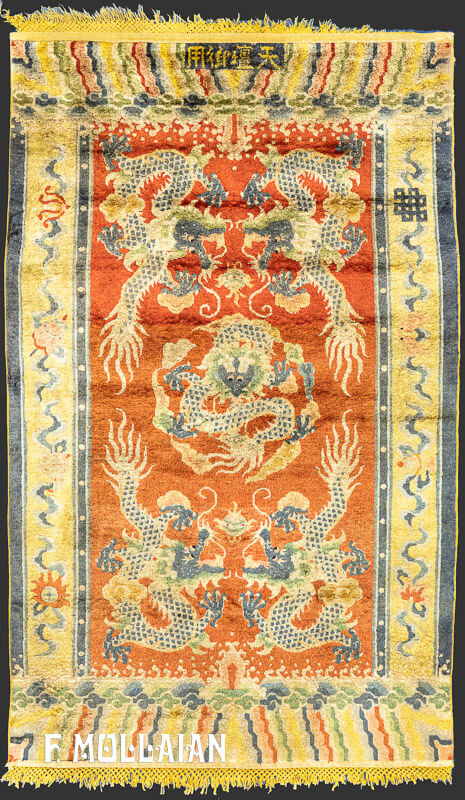Decoding the intricate world of Tibetan rug patterns requires an appreciation for the ancient art of Tibetan weaving. These traditional rugs are not just decorative pieces; they embody the rich cultural heritage of Tibet. Each hand knotted Tibetan carpet tells a story, often showcasing vibrant designs like the stunning Tibetan tiger rug or motifs like poppies green. Crafted from the finest Tibetan wool sourced from Tibet sheep, these area rugs are made by skilled Tibetan weavers who have mastered the art of creating finely woven textiles.
Whether you are seeking an antique Tibetan piece or a custom rug, understanding the nuances of Tibetan design can greatly enhance your collection. The best pieces are often hand knotted with meticulous attention to detail, reflecting the style and fashion of the old world. While many collectors might also appreciate Persian rugs and contemporary rugs, a genuine Tibetan wool rug stands out for its unique character and artistry, making it a prized addition to any oriental rug collection.
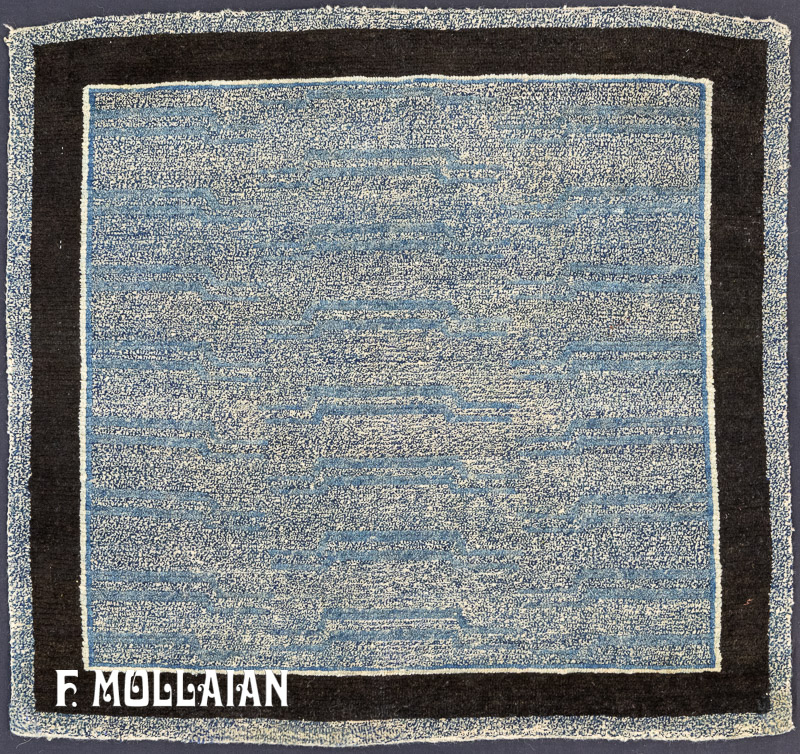
An unusual Tibetan tiger rug. This Tibetan rug is very rare, and it’s in a very good condition! The colors are amazing and it would make a stunning addition to any room. It’s also very well-made, so you’ll be able to enjoy it for many years to come. The measurement of this piece is 79 x 86 CM in size. Moreover this piece has good pile with fine wool quality. Unusual color scheme well blended. Selvages and ends are secured.
Understanding Tibetan Rug History
Understanding the history of the Tibet rug reveals a rich tapestry of culture and craftsmanship. The Tibet rug company plays a pivotal role in preserving these traditions, especially in cities like Kathmandu, where handmade in Nepal practices thrive. Unlike antique rugs that showcase the skills of old world masters, contemporary designs often reflect a fusion of modern art and traditional motifs. While pieces are not made in mass quantity, the hand-knotted rugs are finely woven in the style of vintage Tibetan art, showcasing the elegance of a true masterpiece.
Skilled artisans who have perfected the ancient art of rug making traditions create stunning pieces like the Tibetan meditation rug and gabbeh designs. From luxurious 8×10 runner rugs to intricate dragon rugs, each handwoven piece tells a story. The dyes used in these creations often draw from natural sources, ensuring that the beige and other hues are both vibrant and enduring. These hand tufted and handmade Tibetan rugs reflect the dedication of artisans committed to their craft, making each piece a unique treasure in the rug weaving industry. Notably, Farzin Mollain, an experienced art dealer with an intriguing collection, appreciates the cultural and artistic value of these treasures, making them true masterpieces in the rug-weaving world.
Among the various styles, the Tibetan khaden and saddle rug stand out for their unique designs and versatility. Both types are perfect representations of how Tibetan style integrates functional beauty with artistic expression. As the demand for authentic Tibet rugs continues to grow, it is essential to recognize the artistry behind each hand-knotted creation, ensuring that these time-honored traditions are preserved for future generations.

Photo by Luka Kotar on Unsplash
What are the origins of Tibetan rugs?
The origins of Tibetan rugs can be traced back to the ancient art of carpet weaving, deeply embedded in Tibetan culture and rich in history. Tibetan hand knotted rugs are crafted primarily in rug weaving centers located in the Himalayan region, where artisans skillfully combine the ancient art with modern designs. Traditionally, these rugs utilize wool and natural dyes, giving them a unique aesthetic and durability. The vibrant colors, including striking blue rugs and intricate patterns like the tiger design, often reflect cultural motifs, such as tiger pelts and tibetan wangden.
Many Tibetan refugees have continued this craft, producing stunning collections of designer carpets that add a luxurious touch to your space. These rugs, including sitting rugs and sleeping carpets, can be made to order and are perfect for large areas, enhancing any home with their rich textures. These exquisite pieces in their offerings, showcasing the beauty and craftsmanship of original Tibetan creations that can elevate any interior design scheme.
How have historical events influenced Tibetan rug design?
Historical events have significantly influenced traditional tibetan designs, particularly in the realm of rug making. The rich cultural heritage of Tibet, shaped by Buddhism and trade routes, introduced various motifs and symbols that reflect the spiritual and environmental aspects of Tibetan life. For instance, the representation of animals, such as the tiger skin motif, became popular due to its association with strength and protection, often seen in Tibetan homes as a symbol of status and wealth.
The craftsmanship involved in creating these rugs is noteworthy; artisans use wool sourced from local sheep, which is then hand spun to create durable and vibrant textiles. Companies like Safavieh have recognized the uniqueness of Tibetan rugs, incorporating these historical influences into contemporary designs while maintaining the integrity of traditional techniques. This blend of history and artistry ensures that each rug tells a story, connecting the past with the present in every woven thread.
What role do Tibetan rugs play in Tibetan culture?
Tibetan rugs hold significant cultural and artistic value in Tibetan society, serving both functional and symbolic purposes. Traditionally handcrafted by nomadic families, these rugs are made from high-quality wool, showcasing intricate designs and vibrant colors that reflect the natural beauty and spiritual beliefs of the region. Each rug often tells a story, representing local folklore, religious motifs, or the unique identity of the weaver’s community.
In addition to their aesthetic appeal, Tibetan rugs play a crucial role in daily life. They are used as floor coverings in homes, providing warmth and comfort in the harsh mountain climate. Furthermore, these rugs often function as a status symbol, with larger and more elaborate pieces indicating wealth and social standing within the community.
Moreover, the craft of making Tibetan rugs is an essential aspect of cultural heritage, passed down through generations. This artisanal practice not only preserves traditional techniques but also strengthens community bonds, ensuring that the rich history and artistry of Tibetan culture continue to thrive.
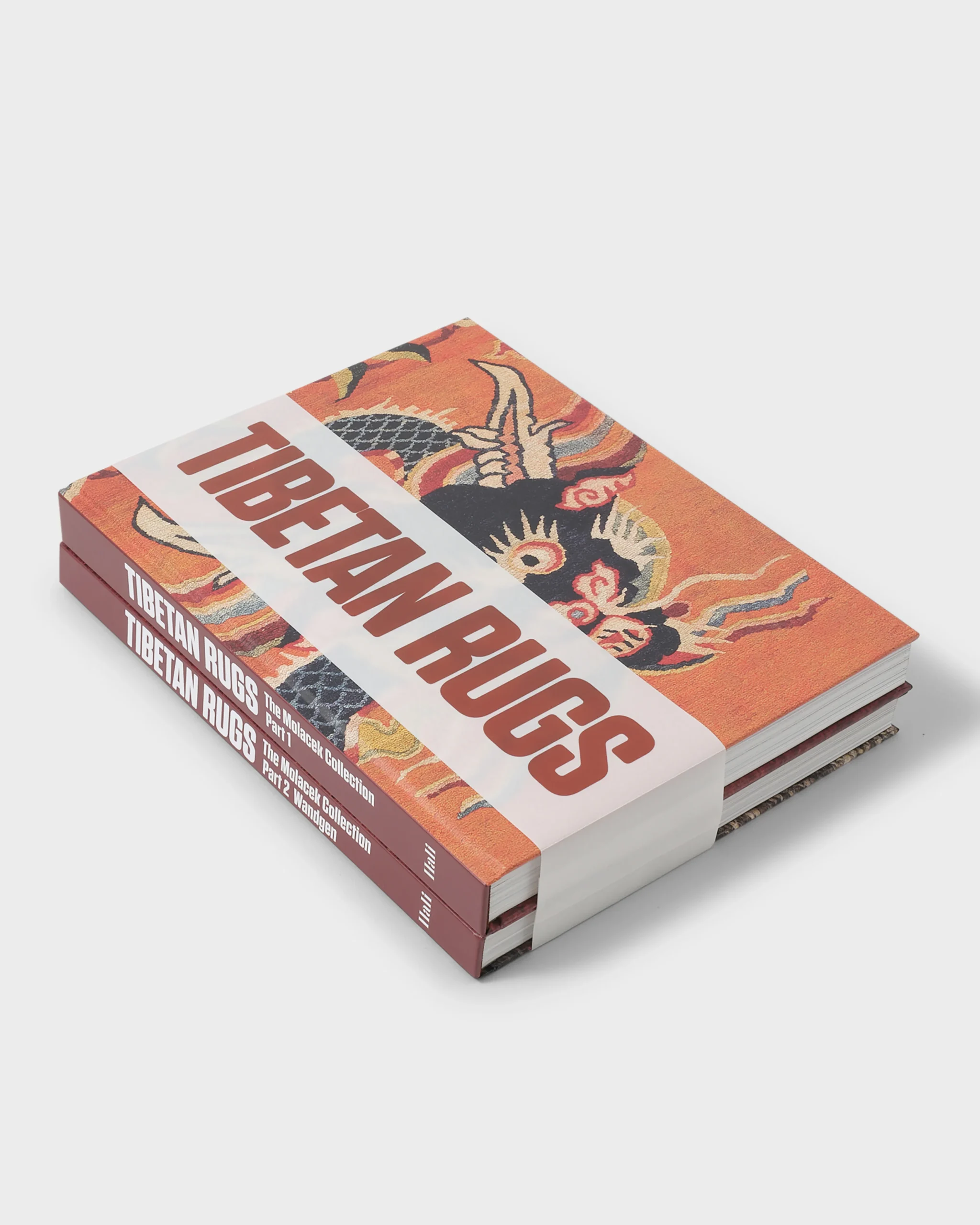
Cover of Tibetan Rugs by Rudi Molacek, an in-depth exploration of Tibetan rug history, design, and craftsmanship, featuring rich visuals and expert commentary.
Book Review on Tibetan Rugs: Cultural Treasures and Craftsmanship
Tibetan rugs are one of the most distinctive and captivating forms of oriental carpets, renowned for their bold designs, symbolic imagery, and exquisite craftsmanship. These rugs, woven by artisans in Tibet and nearby regions, often feature vibrant depictions of animals, deities, and geometric patterns, all of which hold deep spiritual and cultural meanings. The rugs are traditionally crafted with high-quality wool, often from Tibetan highland sheep, which gives them a unique softness and durability.
Among the most famous designs are the tiger rugs, which represent power and protection, and are often used in Buddhist monasteries or as ceremonial pieces. Other motifs may include dragons, lotuses, and clouds, all rooted in Tibetan Buddhist symbolism. The process of rug-making in Tibet is traditionally hand-knotted, a meticulous method that can take months to complete, reflecting the weavers’ dedication to their craft.
In recent years, Tibetan rugs have grown in prominence, not just as functional textiles but as highly collectible works of art. Their rarity, combined with the spiritual resonance of their designs, makes them prized by collectors and interior designers alike. Many antique Tibetan rugs, such as those produced between 1900-1920, are considered true works of art, showcasing an era of Tibetan creativity that continues to inspire today’s rug-making traditions.
For those interested in diving deeper into the history and artistry of Tibetan carpets, Rudi Molacek’s Tibetan Rugs is a must-read. This book offers a comprehensive look into the world of Tibetan weaving, providing rich visual insights and detailed discussions about the designs, materials, and techniques that define this unique craft. Molacek, an expert in the field, meticulously documents the evolution of rug-making in Tibet, from its origins to its influence on contemporary design.
The book not only showcases breathtaking photographs of antique and modern Tibetan rugs but also highlights the cultural significance behind many of the symbols and motifs. It’s a valuable resource for collectors, art historians, and interior designers alike, offering an in-depth understanding of what makes Tibetan rugs so special.
This two-volume set features striking photography and insightful essays that celebrate the beauty and craftsmanship of these exotic textiles. Each page is a testament to the intricate work of Tibetan weavers and the lasting cultural importance of these timeless rugs.
The book is an essential addition to any serious collector’s library, offering inspiration and knowledge to those who appreciate the art of Tibetan rug-making. Whether you are a novice or an expert, these work provide an invaluable guide to understanding the visual and cultural richness of Tibetan rugs.
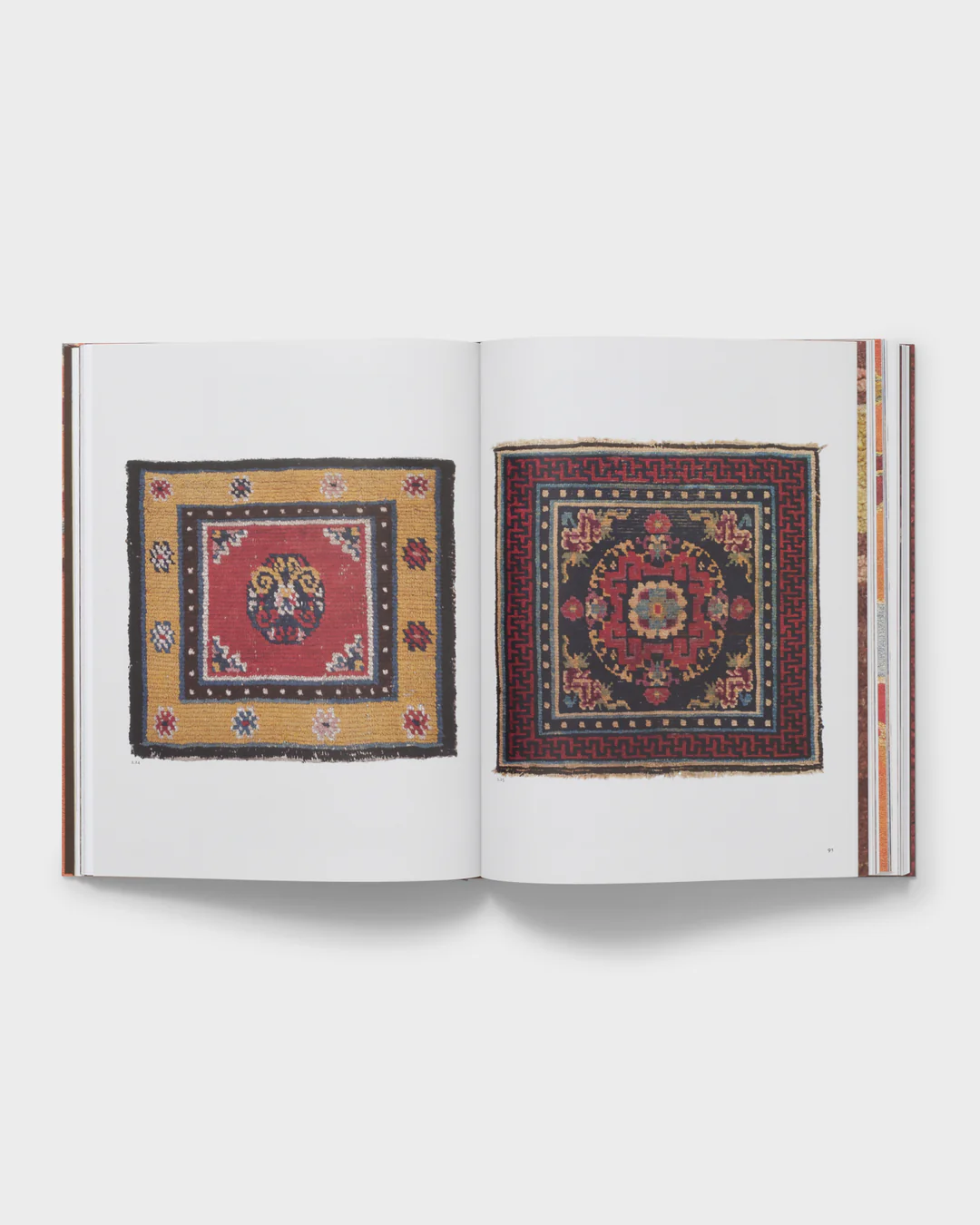
An open view of Tibetan Rugs by Rudi Molacek, featuring two exquisite Tibetan carpets with detailed designs, highlighting the craftsmanship and cultural significance of these textiles.
Identifying Common Patterns in Tibetan Rugs
Tibetan rugs are renowned for their intricate designs and vibrant colors, which often reflect the rich cultural heritage of the region. One of the most striking features of these rugs is the use of geometric patterns, which can include spirals, diamonds, and other symmetrical shapes that create a sense of balance and harmony. These designs are not merely decorative; they often carry significant symbolic meanings, representing elements of Tibetan Buddhism and the natural world.
Another common aspect of Tibetan rugs is the incorporation of natural dyes, derived from plants and minerals, which adds depth and warmth to the colors. Traditional techniques, passed down through generations, ensure that each rug is unique yet recognizable, with specific motifs that can indicate the region of origin or the weaver’s personal style. Understanding these common patterns enhances appreciation for the artistry and craftsmanship behind each handwoven piece.
What are the most common patterns found in Tibetan rugs?
The most common patterns found in Tibetan rugs often reflect the rich cultural heritage and spiritual beliefs of the region. Traditional designs typically incorporate , such as triangles and diamonds, symbolizing the harmony between the earth and the cosmos. These shapes are not only aesthetically pleasing but also carry profound meanings related to Tibetan Buddhism.
Floral and animal motifs are also prevalent, with designs featuring lotus flowers and various wildlife, embodying the beauty of nature and the interconnectedness of life. The use of vibrant colors, such as deep reds, blues, and yellows, enhances these patterns, making them visually striking and representative of Tibetan culture.Additionally, many rugs showcase mandalas, which are intricate circular designs used in meditation practices, symbolizing the universe. These patterns serve both decorative and spiritual purposes, making Tibetan rugs not just functional items, but also meaningful artistic expressions.
How do geometric designs differ from organic motifs in Tibetan rugs?
In Tibetan rugs, the distinction between geometric designs and organic motifs is prominent and reflects cultural significance. Geometric designs often feature sharp lines, precise angles, and repetitive patterns, symbolizing order and harmony. These designs can include elements like squares, triangles, and intricate borders, which are thought to represent the structured nature of the universe. On the other hand, organic motifs embody the fluidity and irregularity found in nature, drawing inspiration from flora and fauna. These motifs often showcase curvilinear shapes, flowing patterns, and vibrant colors, reflecting the spiritual connection to the natural world.
This contrast not only highlights the artistic diversity in Tibetan rug-making but also serves a functional purpose, as different designs can evoke various emotions and spiritual meanings. The interplay between geometric and organic elements creates a rich tapestry of symbolism, showcasing the skill and creativity of Tibetan artisans. Each rug tells a unique story, blending tradition with personal expression.
What symbolism is embedded in specific rug patterns?
Rug patterns often embody deep cultural meanings and historical narratives, reflecting the identity and values of the communities that create them. For instance, the geometric shapes found in many Middle Eastern rugs symbolize harmony and balance, representing the universe’s order. In contrast, floral motifs prevalent in Persian rugs often signify life and fertility, celebrating nature’s beauty and the cycles of growth.
Furthermore, the presence of animals in rug designs can carry various interpretations; for example, a lion may symbolize strength and courage, while a bird can represent freedom and transcendence. Each color choice also plays a critical role in the symbolism of rugs; for instance, red often denotes power and passion, whereas blue might symbolize tranquility and peace.
Ultimately, the rich tapestry of symbolism woven into rug patterns serves as a visual language, conveying stories and beliefs intrinsic to the culture they originate from.
Materials and Techniques: What Makes Tibetan Rugs Unique?
Tibetan rugs are distinguished by their unique materials and techniques, which have been passed down through generations. Traditionally, these rugs are made from high-quality wool, sourced from the region’s hardy sheep, which provides durability and warmth. The wool is often hand-spun and dyed using natural colorants, resulting in vibrant hues that are both rich and lasting.
The weaving technique employed in crafting Tibetan rugs is equally significant. Artisans utilize a method known as , which creates a dense and resilient texture. Each rug is meticulously hand-woven, allowing for intricate designs that often reflect spiritual and cultural symbols. This attention to detail ensures that every rug is not just a functional item but a piece of art, showcasing the weaver’s skill and the rich heritage of Tibetan culture.
Moreover, the designs of Tibetan rugs often incorporate traditional motifs such as clouds, dragons, and floral patterns, which hold deep cultural significance. This blend of exceptional materials, skilled craftsmanship, and meaningful designs culminates in rugs that are not only beautiful but also imbued with history and tradition, setting them apart in the world of textiles.
What types of materials are used in Tibetan rug weaving?
In Tibetan rug weaving, a variety of natural fibers are traditionally employed to create durable and aesthetically pleasing textiles. The most common material is wool, sourced from local sheep, which provides warmth and resilience. Tibetan wool is particularly prized for its softness and ability to hold dyes effectively.
Another significant material is silk, often used in more luxurious rugs. The incorporation of silk adds a lustrous quality to the designs, enhancing their visual appeal. Additionally, some weavers use cotton for the foundation of the rugs, providing structural integrity and stability.
Moreover, natural dyes derived from plants and minerals are integral to the coloring process, allowing artisans to produce vibrant and varied hues that reflect the rich cultural heritage of Tibet. This combination of materials results in rugs that are not only functional but also imbued with artistic significance.
How do traditional weaving techniques affect the quality of the rugs?
Traditional weaving techniques play a crucial role in determining the overall quality of rugs. These methods, often passed down through generations, emphasize the use of high-quality materials such as natural fibers, which contribute to the rug’s durability and aesthetic appeal. By utilizing manual processes, artisans can control every aspect of the weaving, ensuring precision and attention to detail that machine-made rugs often lack.
Additionally, the intricate patterns and designs achieved through traditional techniques reflect the cultural heritage of the weavers, adding a unique character to each piece. This artistry not only enhances visual appeal but also elevates the rug’s value in the market. Furthermore, the time-consuming nature of these methods allows for better craftsmanship, leading to a final product that is both beautiful and long-lasting.
In contrast to mass-produced alternatives, rugs crafted using traditional techniques often exhibit superior colorfastness and texture, making them more desirable for consumers seeking quality and authenticity. As a result, these rugs are not just functional items, but also treasured pieces of art.
What are the key differences between hand-knotted and machine-made Tibetan rugs?
Hand-knotted Tibetan rugs are crafted using traditional techniques, where artisans tie individual knots by hand, creating a unique and intricate design. This labor-intensive process results in rugs that often exhibit exceptional quality, durability, and aesthetic appeal. Each rug is a work of art, reflecting the skill and creativity of the weaver, and often features natural dyes and high-quality wool, contributing to its longevity and softness.
In contrast, machine-made Tibetan rugs are produced using automated processes, which allows for faster and more cost-effective manufacturing. These rugs are typically made with synthetic materials and can lack the depth and character found in their hand-knotted counterparts. While they may offer a more uniform appearance and lower price point, they often lack the intricate craftsmanship and durability associated with hand-knotted rugs.
Ultimately, the choice between hand-knotted and machine-made Tibetan rugs comes down to personal preference, budget, and the desired aesthetic for one’s space.
Evaluating Quality: What Should Collectors Look For?
When it comes to evaluating quality, collectors should pay close attention to a few key factors. First and foremost, authenticity is crucial; collectors need to verify that the item is genuine and not a reproduction or counterfeit. This can often be confirmed through documentation, certificates of authenticity, or expert appraisals.
Another important aspect is condition. The state of an item significantly influences its value and desirability. Collectors should examine for any signs of wear, damage, or restoration, as these factors can detract from the item’s overall appeal.
Additionally, provenance plays a vital role in establishing an item’s significance. Knowing the history of ownership can add to its story and value, making it more desirable to potential buyers or collectors.
Lastly, understanding the market trends and demand for specific items can help collectors make informed decisions about their purchases and investments.
How can you determine the quality of a Tibetan rug?
Determining the quality of a Tibetan rug involves several key factors that can be assessed during inspection. First, examine the material used; high-quality Tibetan rugs are typically made from natural fibers like wool or silk, which contribute to their durability and texture. The density of the knots is another important indicator; a higher knot count per square inch suggests a more intricate design and a longer-lasting product.
Additionally, look at the color and dye quality. Authentic Tibetan rugs often feature vibrant, natural dyes that have been carefully applied, resulting in rich, deep hues. Lastly, consider the craftsmanship; handwoven rugs should exhibit slight irregularities, which indicate a skilled artisan’s touch. By evaluating these elements, you can make an informed decision about the quality of a Tibetan rug.
What are the signs of a well-made Tibetan rug?
When evaluating a well-made Tibetan rug, several key signs can indicate its quality and craftsmanship. First, examine the knot density; a higher number of knots per square inch typically signifies more intricate work and durability. Tibetan rugs often use a unique hand-knotting technique, which enhances their strength and longevity compared to machine-made alternatives.
Another important aspect is the material used. Authentic Tibetan rugs are generally crafted from high-quality wool, often sourced from local sheep, providing a soft yet resilient texture. Additionally, the dying process should be natural and vibrant, indicating that the colors will remain rich over time.
Lastly, pay attention to the design and patterns. Traditional Tibetan motifs often reflect cultural themes, and a well-crafted rug will feature precise, symmetrical designs that are evenly spaced and balanced. These elements combined contribute to the overall aesthetic and functional quality of the rug.
How important is the rug’s age in determining its value?
The age of a rug plays a crucial role in determining its value, as it often reflects its historical significance and craftsmanship. Antique rugs, typically over 100 years old, are highly sought after due to their rarity and the traditional techniques used in their creation. The materials and dyes used in older rugs can also contribute to their allure, as many feature natural fibers and colors that are no longer commonly produced.
Furthermore, the condition of the rug is directly influenced by its age. Well-preserved rugs from past centuries can command higher prices, while those that exhibit significant wear or damage may see a decrease in value. Collectors and enthusiasts often seek rugs with a rich history, making age a significant factor in the overall appraisal of a piece.
Ultimately, while age is an important consideration, it is just one of several factors that influence a rug’s market value, including design, origin, and condition.
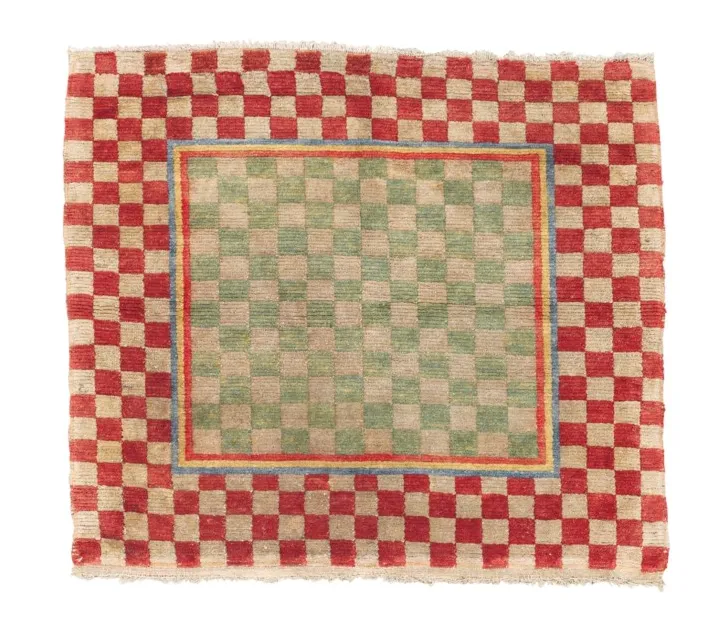
This Tibetan rug 76×89 cm., dating from the late 19th century, features traditional patterns with notable restoration work including reweaving on both ends and repiled outer rows. Available through Christie’s, it remains a valuable piece of Tibetan craftsmanship despite wear and light corrosion in certain areas.
Collecting Tibetan Rugs: What Do You Need to Know?
Collecting Tibetan rugs can be a rewarding experience, but it requires a good understanding of the unique characteristics that define these exquisite pieces. Known for their vibrant colors and intricate patterns, Tibetan rugs often feature traditional motifs that reflect the rich cultural heritage of the region. Before starting your collection, it’s essential to familiarize yourself with the different types of rugs, such as flatweaves and knotted rugs, as well as the materials used, including wool and silk.
Another crucial factor to consider is authenticity. Ensure that you buy from reputable dealers who can provide provenance and verification of the rug’s origin. Be wary of mass-produced imitations that lack the craftsmanship and quality of genuine Tibetan rugs. Additionally, understanding the rug’s condition is vital; inspect for any signs of wear, repairs, or fading that could affect its value and longevity.
Finally, consider the size and style of the rug to ensure that it complements your home decor. Collecting Tibetan rugs is not just about acquiring beautiful pieces; it’s also about appreciating the artistry and history behind them.
What are the best practices for starting a Tibetan rug collection?
Starting a Tibetan rug collection can be a rewarding endeavor, but it requires careful consideration and research. First and foremost, educate yourself about the different styles and techniques used in Tibetan rug making. Familiarize yourself with the various patterns, colors, and materials that define these rugs, as this knowledge will help you make informed choices.
Next, set a budget for your collection. Tibetan rugs can vary significantly in price, so knowing your financial limits will help you choose pieces that fit your collection goals without overspending. Consider starting with smaller, more affordable rugs before investing in larger, high-value pieces.
Finally, purchase from reputable sources. Whether you choose to buy from galleries, artisans, or online platforms, ensure that the seller is trustworthy. Authenticity is crucial, as genuine Tibetan rugs are handmade and often support local communities.
Where can you find authentic Tibetan rugs for sale?
For those seeking authentic Tibetan rugs, there are several avenues to explore. One of the best places to start is at specialized artisan rug retailers that focus on handmade textiles from Tibet. These shops often source their products directly from Tibetan weavers, ensuring quality and authenticity. Additionally, many ethnic markets or cultural fairs feature vendors who offer genuine Tibetan rugs, providing an opportunity to purchase directly from the artisans themselves.
Online platforms have also become a popular option for finding authentic Tibetan rugs. Websites dedicated to handcrafted goods often showcase a variety of styles and designs, along with detailed descriptions of the origins and weaving techniques. It’s essential to verify the seller’s credibility and review customer feedback before making a purchase.
Lastly, visiting Tibetan cultural centers or galleries can lead to unique finds. These institutions often sell rugs as a means of supporting local artisans and promoting Tibetan culture.
How can you authenticate a Tibetan rug before purchasing?
When looking to authenticate a Tibetan rug before making a purchase, it’s crucial to examine the craftsmanship closely. Authentic Tibetan rugs are hand-knotted, showcasing intricate patterns and vibrant colors achieved through natural dyes. Inspect the back of the rug; a genuine piece will reveal its handmade origins with irregularities in the weave, unlike machine-made replicas that exhibit uniformity.
Another essential factor is to check the material used. Traditional Tibetan rugs are typically made from high-quality wool, often sheep or yak, which gives them a distinct texture and durability. Feel the rug and look for a soft yet dense feel, indicative of authentic materials.
Additionally, consider the provenance of the rug. Reputable sellers should provide information about where and how the rug was made. Researching the seller’s background can also add a layer of confidence to your purchase.
Caring for Your Tibetan Rugs: How to Maintain Their Beauty
Caring for your Tibetan rugs is essential to maintain their beauty and longevity. Regular cleaning is the first step; vacuum your rug gently on a low setting to remove dust and debris without damaging the fibers. For deeper stains, use a mild soap solution and a soft cloth, avoiding harsh chemicals that can harm the natural dyes.
In addition to cleaning, it’s important to rotate your rug periodically. This helps to prevent uneven wear from foot traffic and sunlight. If possible, place your rug in a location where it won’t be exposed to direct sunlight for long periods, as this can fade the vibrant colors over time.
Lastly, consider consulting a professional cleaning service every few years to ensure thorough care. With proper maintenance, your Tibetan rug can remain a stunning centerpiece in your home for generations.
What are the best methods for cleaning Tibetan rugs?
Cleaning Tibetan rugs requires a delicate approach to preserve their intricate designs and natural fibers. The best method begins with regular vacuuming to remove dust and dirt, ensuring that the vacuum is set on a low setting to avoid damage.
For deeper cleaning, it is advisable to use a mild detergent mixed with water. Test this solution on a small, inconspicuous area first to check for colorfastness. Gently blot the stained area with a soft cloth or sponge, rather than scrubbing, to avoid fraying the fibers.
After cleaning, rinse the area with clean water and blot again to remove any soap residue. Finally, allow the rug to air dry completely in a shaded area, avoiding direct sunlight, which can cause fading. Regular professional cleaning every few years is also recommended to maintain the rug’s beauty and longevity.
How can you protect your rugs from damage over time?
Regular cleaning is essential for maintaining the beauty and longevity of your rugs. Vacuuming at least once a week helps remove dirt and dust that can wear down fibers over time. For deeper cleaning, consider professional services every few years, especially for delicate materials.
Additionally, placing rugs strategically can prevent damage from high foot traffic. Using rugs in low-traffic areas or layering them with larger mats can help shield them from wear. Consider using furniture coasters to avoid imprints and damage.
Another important factor is protecting rugs from sunlight. Direct sunlight can cause fading and deterioration, so using curtains or UV protectant sprays can help maintain their color and integrity.
Lastly, immediate attention to spills is crucial. Blotting spills with a clean cloth and using appropriate cleaning solutions can prevent stains from setting in, preserving the rug’s appearance for years to come.
What storage tips should collectors keep in mind?
For collectors, proper storage is essential to preserving the value and condition of their items. First and foremost, always ensure that your collectibles are kept in a climate-controlled environment. Extreme temperatures and humidity can cause significant damage over time, so aim to maintain a consistent temperature between 65-70°F and humidity levels below 50%.
Additionally, utilize protective materials such as acid-free boxes, sleeves, or archival-quality containers to shield your items from dust, light, and physical damage. Avoid using plastic that contains PVC, as it can emit harmful chemicals over time.
Organizing your collection is also crucial; keep an accurate inventory and label your storage containers clearly. This not only helps in locating items easily but also aids in tracking their condition and value. Lastly, regularly inspect your collection for any signs of deterioration to address issues before they become severe.
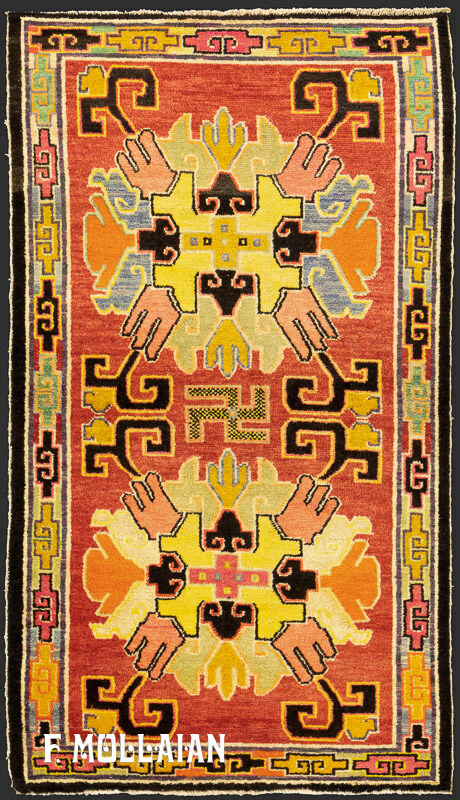
This stunning hand-knotted Tibetan antique rug, crafted around 1920, features a striking medallion design. The central motif includes two geometric medallions, each separated by a traditional swastika, a symbol of auspiciousness in Tibetan culture. The rug’s background is a light red, adding a vibrant yet soothing warmth to any room. The borders showcase geometric cloud patterns in multicolored pastels, which elegantly frame the central design. The rug is woven with a wool pile on a cotton warp and weft foundation, ensuring durability while maintaining a soft, luxurious feel. Despite its age, this piece is in excellent condition, with most of its original pile intact, making it both a collectible and functional piece of décor.
Conclusion: Why Collecting Tibetan Rugs Is Worth It
Collecting Tibetan rugs is a rewarding endeavor that merges art, culture, and history. Each rug tells a story, showcasing the intricate craftsmanship that has been passed down through generations. The vibrant colors and unique patterns reflect the rich Tibetan heritage, making these rugs not just functional items but also pieces of art that enhance any space.
Additionally, Tibetan rugs are known for their durability and quality, often lasting for decades, if not centuries. As a collector, you invest in a timeless piece that appreciates in value over time, offering both aesthetic pleasure and financial returns.
Moreover, by collecting these beautiful works, you contribute to the preservation of Tibetan culture and provide support to artisans who rely on traditional techniques. This meaningful connection to the culture and its people adds another layer of significance to each rug in your collection.
What personal stories do collectors have about their Tibetan rugs?
Many collectors of Tibetan rugs cherish unique personal stories that often intertwine with their journeys of discovery. For some, the passion began during a life-changing trip to the Himalayas, where they stumbled upon a small shop in a remote village. The vibrant colors and intricate patterns of the rugs captivated them, igniting a lifelong fascination. Others inherited their love for these textiles from family members, who passed down tales of how these handwoven masterpieces were crafted by skilled artisans, each carrying the spirit of Tibetan culture.
Collectors often recount moments of serendipity, such as finding a rare piece at a flea market or an auction, leading to emotional connections that deepen their appreciation. Each rug tells a story, reflecting the history, traditions, and artistry of the Tibetan people. These personal narratives transform mere objects into cherished heirlooms, symbolizing not just aesthetic beauty but also profound cultural significance.
How do Tibetan rugs contribute to the art and culture of the world?
Tibetan rugs are not merely functional items; they are vibrant expressions of cultural heritage and artistry. Crafted by skilled artisans, these rugs showcase intricate designs that often reflect the spiritual beliefs and natural surroundings of the Tibetan people. Each piece tells a story, woven with symbols that convey deeper meanings, from the Buddhist motifs to representations of the region’s rich flora and fauna.
Moreover, Tibetan rugs play a significant role in preserving traditional craftsmanship. The techniques used in their creation have been passed down through generations, ensuring that the art form is kept alive in a rapidly modernizing world. As a result, these rugs have become sought-after items in the global market, bridging cultural divides and fostering appreciation for Tibetan artistic traditions.
In addition to their aesthetic appeal, Tibetan rugs contribute to the global art scene by inviting dialogue about cultural identity and heritage. They serve as a reminder of the importance of sustainability and ethical production, as many artisans use natural materials and traditional methods. This not only supports local economies but also promotes awareness of the rich tapestry of human creativity.
What future trends can we expect in Tibetan rug collecting?
In the realm of Tibetan rug collecting, we can anticipate several exciting future trends. As global interest in sustainable and ethically sourced products grows, collectors will increasingly seek out rugs that are made through traditional methods, emphasizing handmade craftsmanship and the use of natural materials. This shift is likely to enhance the value of authentic Tibetan rugs, as consumers become more discerning about their purchases.
Additionally, the fusion of modern design aesthetics with traditional Tibetan motifs may emerge as a significant trend. Younger collectors are drawn to unique pieces that blend cultural heritage with contemporary style, leading to innovative designs that appeal to a broader audience. As technology advances, the incorporation of digital platforms for buying and selling these rugs will also grow, making it easier for collectors to access rare pieces from around the world.
Finally, the increasing awareness of Tibetan culture and its preservation will likely inspire more collectors to engage with the stories behind the rugs, fostering a deeper appreciation for their history and significance in the Tibetan community.
Frequently Asked Questions About Tibetan Rugs
What are the distinctive characteristics of Tibetan rugs?
Tibetan rugs are characterized by a unique weaving technique where the design on the face of the rug is not visible on the back. They are extremely thick and coarsely woven and often have a distinctive bulky pile fringe to reduce the wear on all four sides. They traditionally utilize the “S” spun wool and have a relatively limited color palette, primarily consisting of red, blue, brown, yellow, ivory, and two greens.
How old are Tibetan rugs?
Dating Tibetan rugs is a complex issue. While some scholars propose origins as early as the 15th century, the oldest reliably dated Tibetan rugs via radiocarbon analysis fall between the late 16th and 18th centuries. The lack of surviving examples and precise documentation makes it difficult to definitively pinpoint the origins and age of many older pieces.
What are the common motifs and designs found in Tibetan rugs?
Common motifs in Tibetan rugs include variations of the ‘Central Asian Medallion’, often enclosed within a square border and sometimes accompanied by small medallions or quartered motifs. The swastika symbol, rendered as a regular grid of uniformly coloured squares surrounding a central square, is also a frequent design element, particularly in older examples. Other motifs like vases, flowers, and butterflies are also encountered.
Where were Tibetan rugs traditionally produced?
Tibetan rugs were traditionally produced across Tibet, with a primary concentration in the Tibetan Autonomous Region and some production in neighboring provinces like Gansu. The city of Xining, in particular, was known for its rug workshops.
What is the significance of the “khamdrub” style in Tibetan rugs?
“Khamdrub” is a term used to describe a specific style of Tibetan rug that originated in the Kham region of eastern Tibet. These rugs often feature the distinctive “Central Asian Medallion” and are known for their use of bold colours and geometric designs.
What is the difference between “S” spun and “Z” spun wool in Tibetan rugs?
“S” spun and “Z” spun refer to the direction in which the wool fibers are twisted. Tibetan rugs traditionally use “S” spun wool, which is spun in a clockwise direction. “Z” spun wool, spun counterclockwise, is less common and not traditionally used in Tibetan rugs.
How did Chinese influence impact Tibetan rug weaving?
While Tibetan rugs have their own distinct style, Chinese influence can be seen in certain motifs, color combinations, and formats. The increased demand for Tibetan rugs in the 18th and 19th centuries, particularly from China, also led to changes in production, with some workshops in China beginning to specialize in Tibetan-style rugs.
What are some resources for further research and information on Tibetan rugs?
For further research, refer to publications by HALI Publications like “Tibetan Rugs” by Rudi Molacek and “Tibet’s Tradition in Indigo” by Thomas Wild. The books offer comprehensive insights into Tibetan rug history, design, production techniques, and more.


